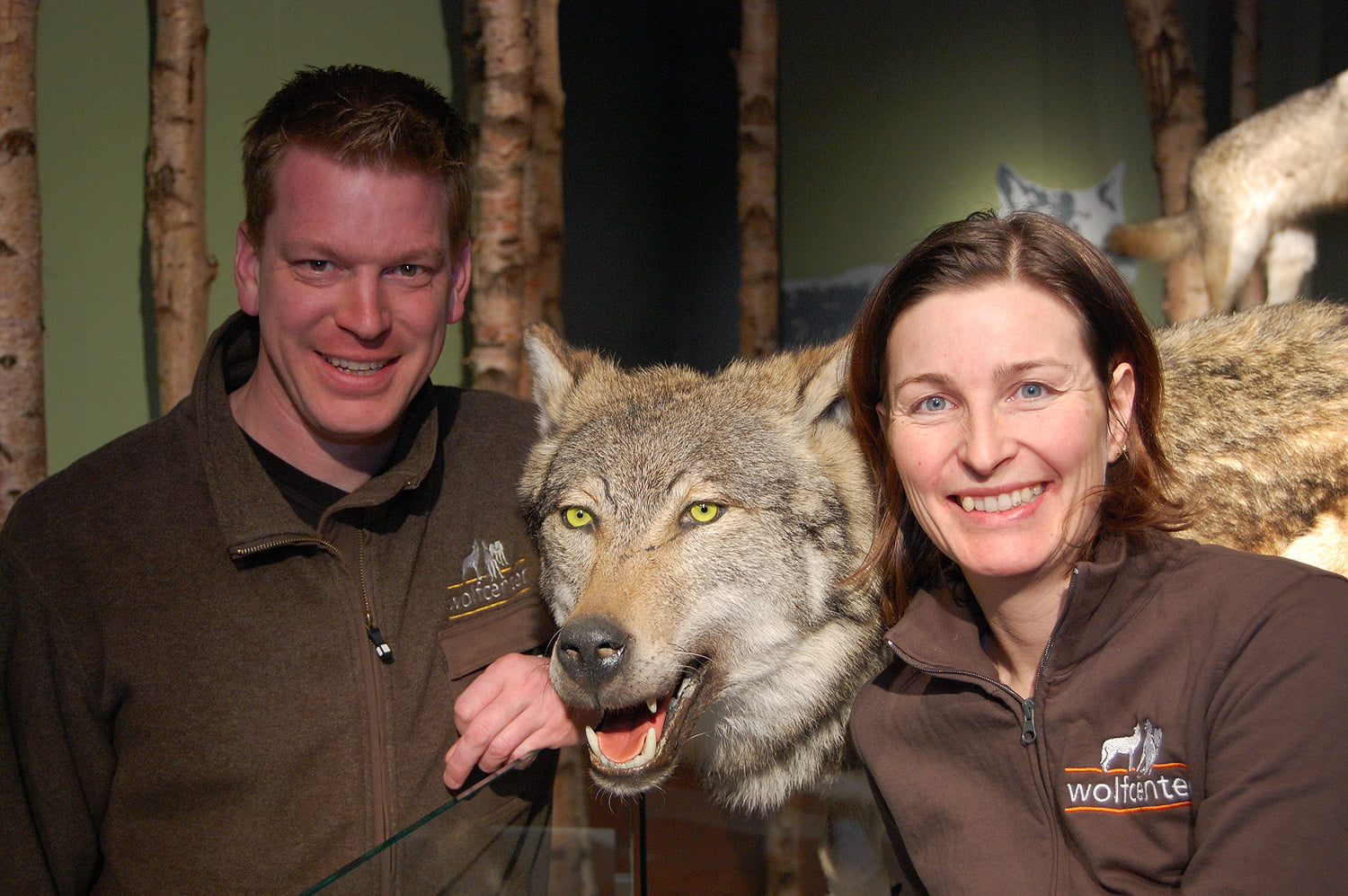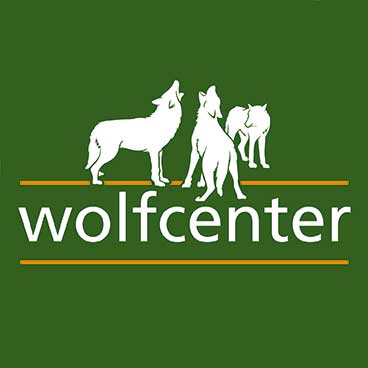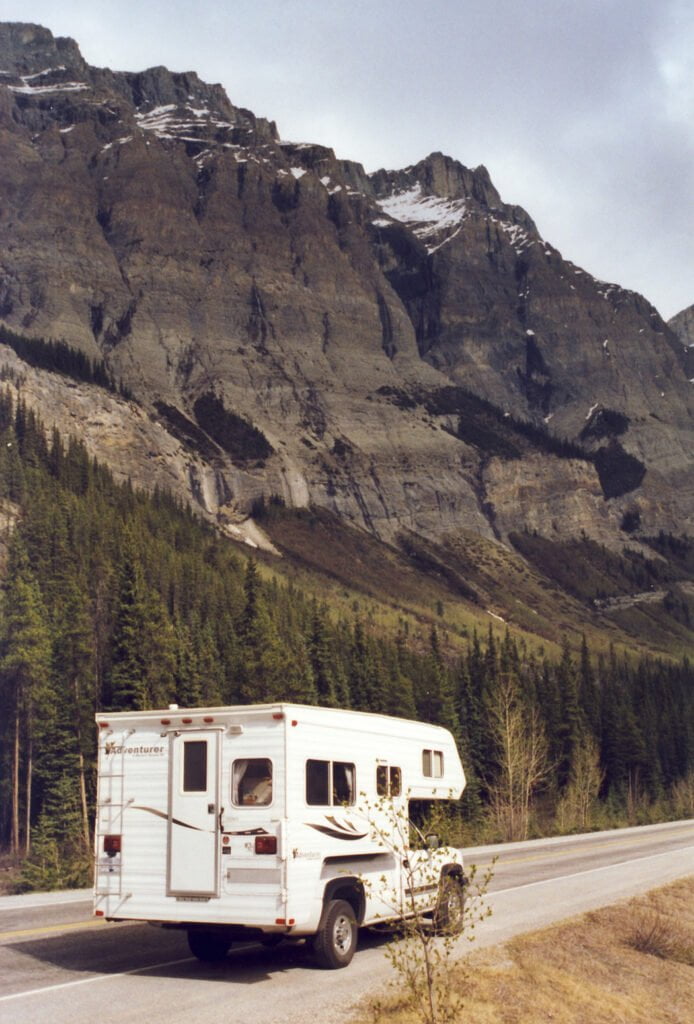
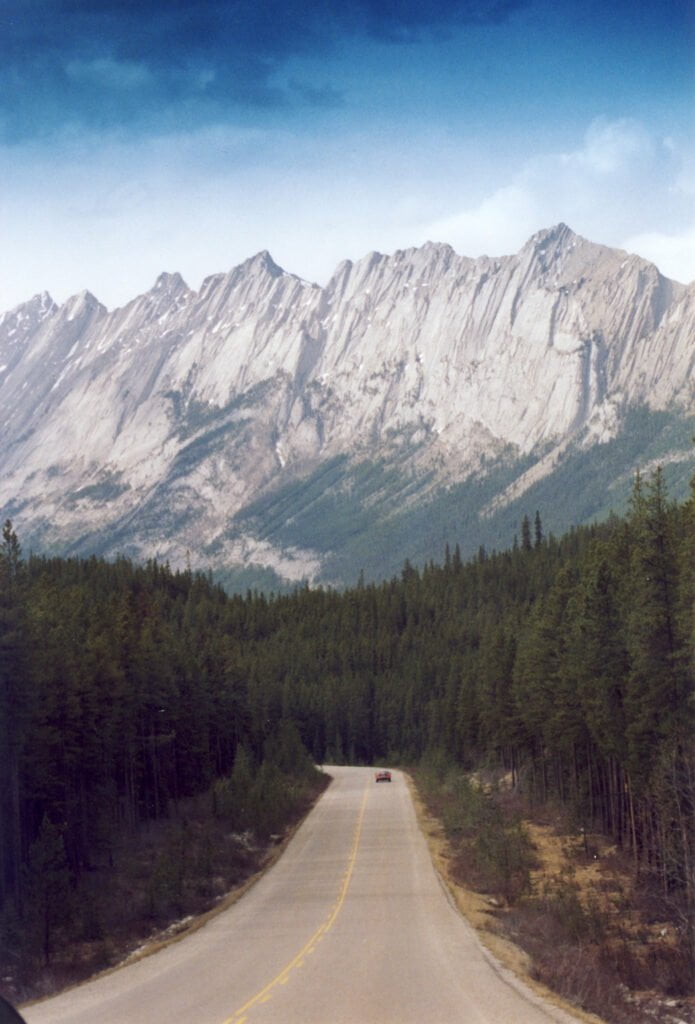


Back in Germany, Frank Fass could not forget the encounter. Knowing that wild wolves had resettled in Germany, he and Christina decided to give up their jobs and devote themselves to conserving the animals and educating the public about them. They started working on plans for their own WOLFCENTER. Until then, such places had been non-existent in Germany. The Fasses’ goal was, and still is, to give their visitors food for thought and encourage them to rethink their opinions about wild wolves based on fact rather than myth and hearsay.
After five years of careful planning, the couple managed to do what many had told them was unthinkable: In April 2010, the first German WOLFCENTER opened its doors to visitors.


It took hundreds of phone calls, meetings, emails, visits to possible locations and presentations to potential financial backers before a concept designed for Germany became reality.
“Now and then one of us was ready to give up on our project, but the other spouse kept urging it forward,” says Christina. “That is our secret weapon. We both wanted to put the into practice and make it a success.”
Today the is a viable enterprise working in environmental education and tourism. Staff members make it their business to inform visitors all about wolves – their behaviour, their habitat, their social structure, how they’ve been hunted and how they can be protected. Frank Fass is convinced that it is possible for people and wolves to live together in harmony in Germany, even though some problems still have to be resolved.
The concept and learning opportunities have been carefully designed and the target group is clearly defined – everybody!
The main building of the has two permanent exhibitions. The multimedia presentation “The Wolf” examines the great predator: its relationship to the environment, its conflicts with agriculture, how and why it is hunted. The 230 sqm exhibition tempts visitors to get actively involved, withrealistic settings, stunning photography and videos portraying the life of a wolf in the wild. Hands-on exhibits that stimulate all the senses make this exhibition a special experience for young and old.
Currently, the 5,2-hectare wolf compound accommodates five enclosures, each with an observation deck. Three enclosures are inhabited by European grey wolves. In two enclosures Arctic wolves are presented. Two groups have been raised by other wolves, while the others have been raised by humans. Hand raising wolf pups may seem to be an artificial intervention in their lives, but it accustoms the animals to human contact, and that makes it easier to observe them.
Our wolves are representatives of their wild fellows and help our public relations work. In the future, we plan to build more wolf enclosures to accommodate other subspecies.
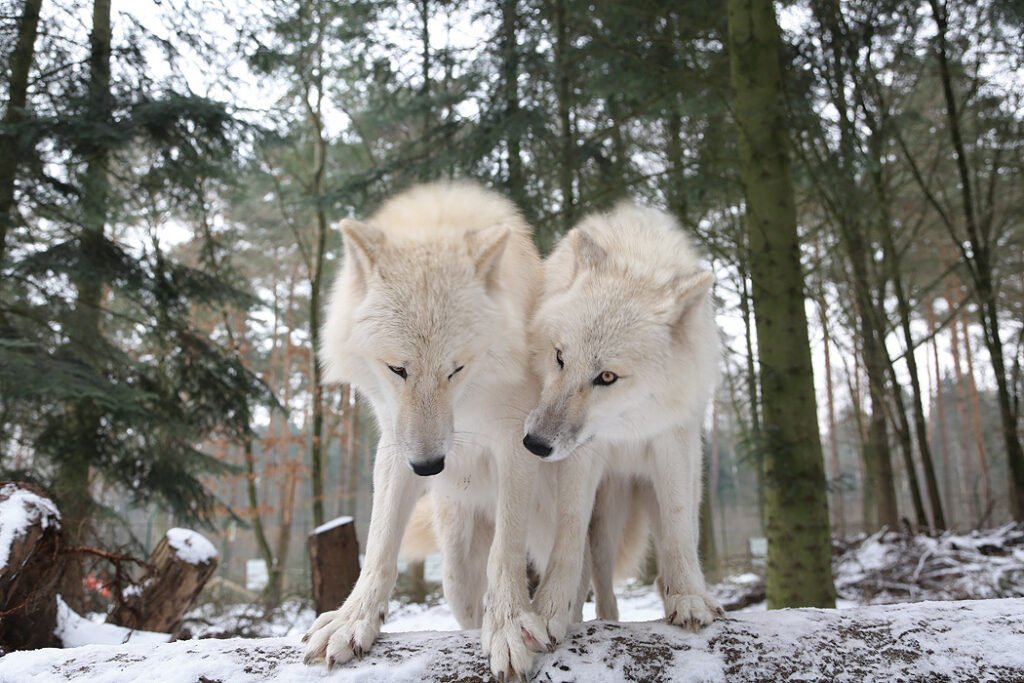

Guided tours take place several times a day. Visitors learn from staff all about the lives of wolves, how they came to return to Germany and the conflicts that have sometimes been provoked.
Each guided tour ends in rousing style, with the visitors and their guide howling together to encourage the wolves to join in. It usually works!

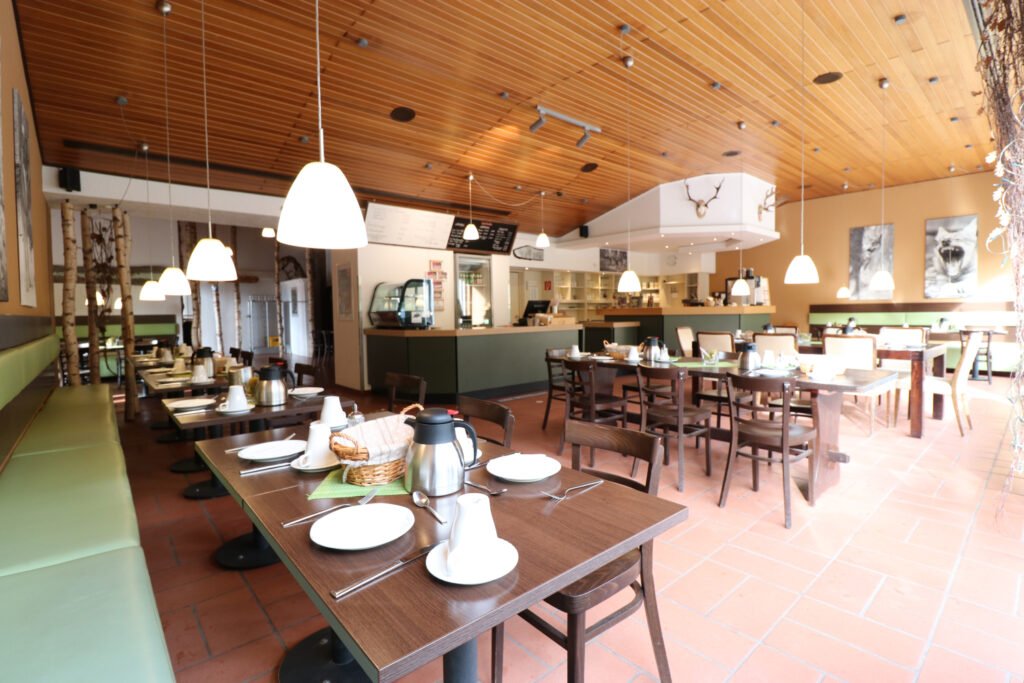
The spacious restaurant – the Wolfsrevier with its patio – offers a great variety of seasonal food, as well as a unique location for celebrations of all kinds.
Four twin rooms – homely and clean – are available for longer visits and offer the opportunity to join in howling concerts!
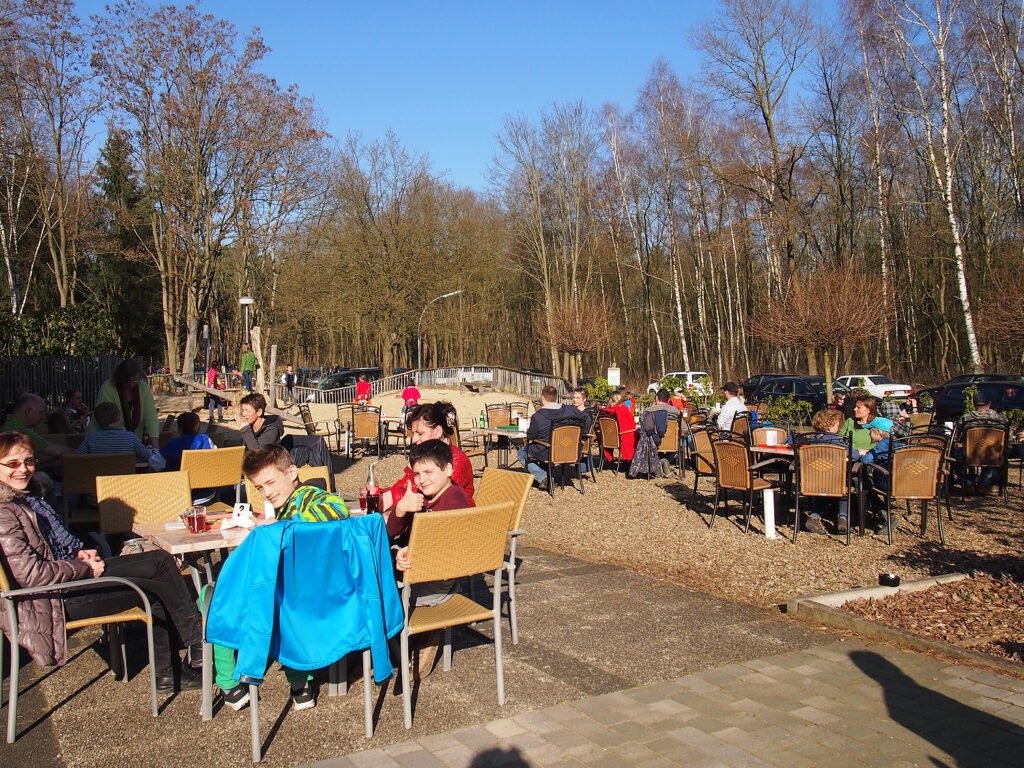
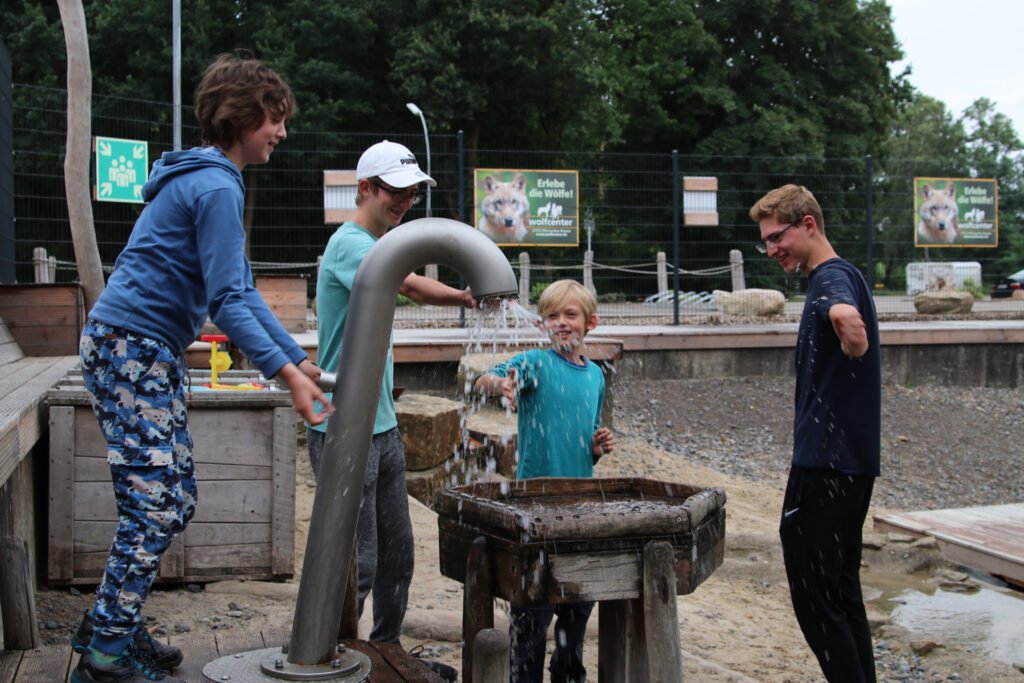

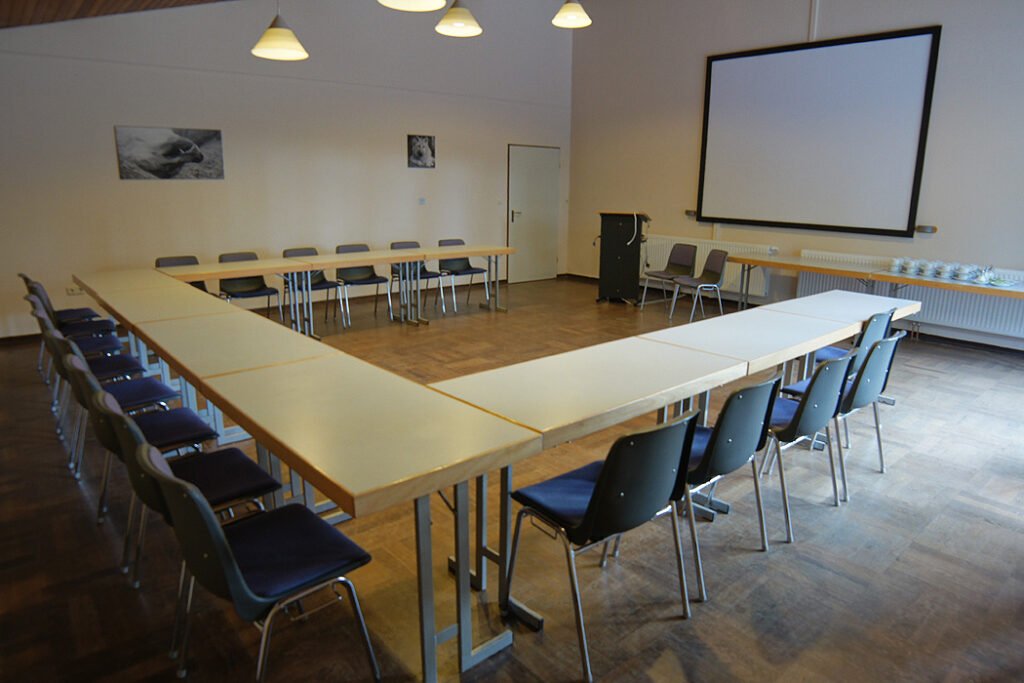
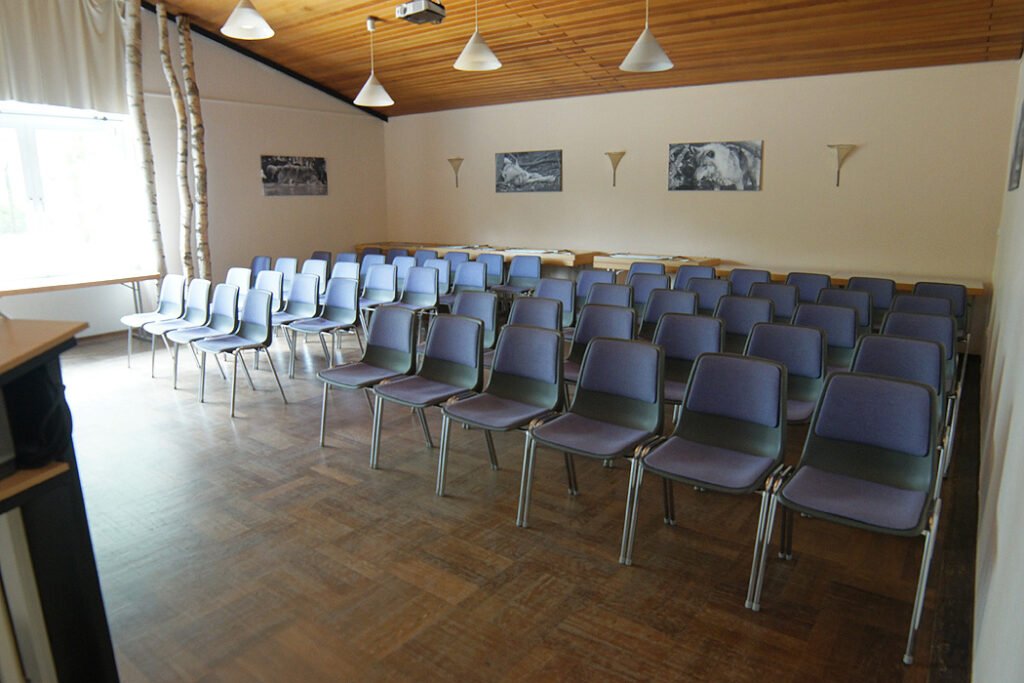
The second major permanent exhibition, the “Time Tunnel”, which opened in April 2012, uses a parallel timeline to answer how humans, dogs and wolves have developed in northern Germany over the last 15,000 years. The development of agriculture and forestry is also shown in detail, as well as human hunting and climate development. Also in this exhibition different wolf preparations are depicted in different situations.
There’s a cinema showing plenty more wild wolves and a shop offering souvenirs and gifts.



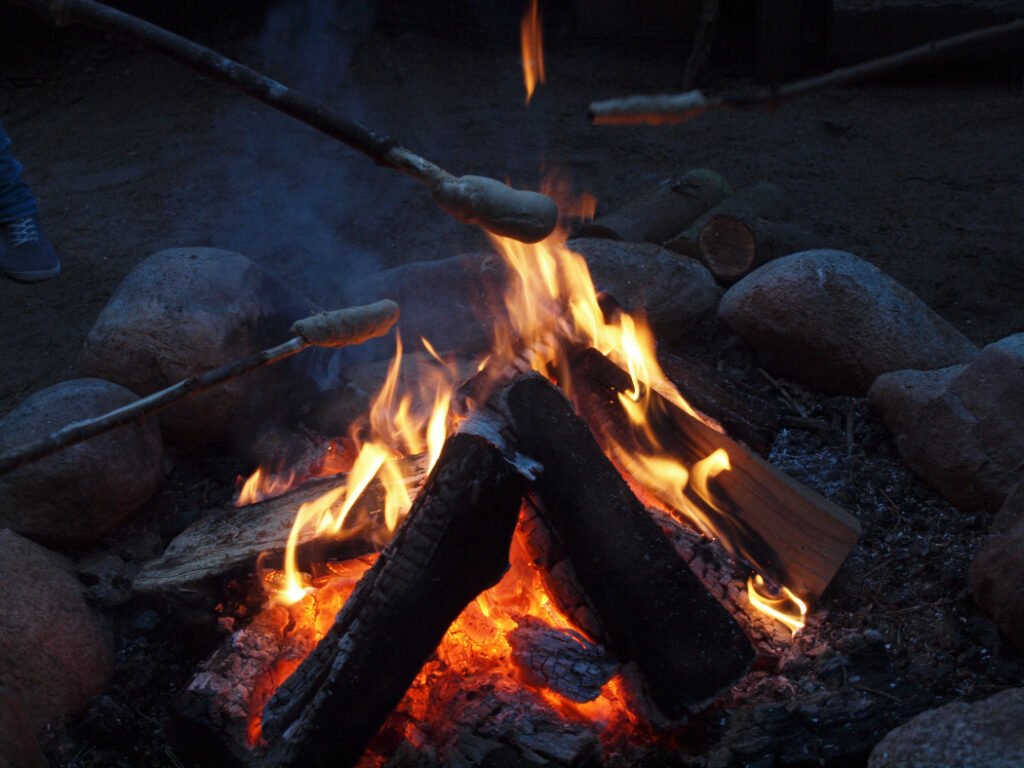
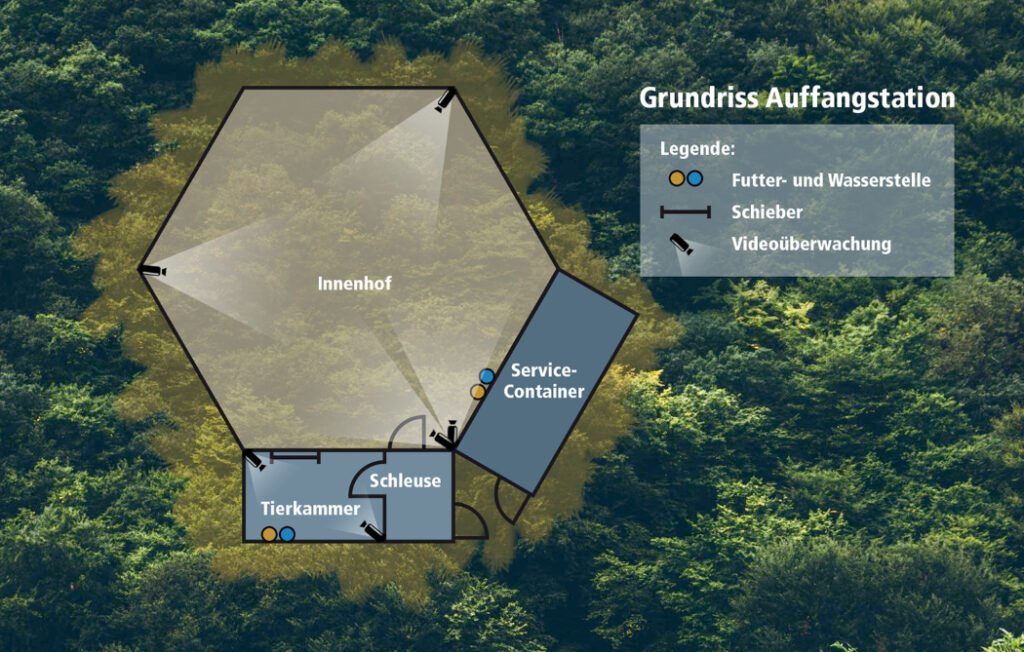
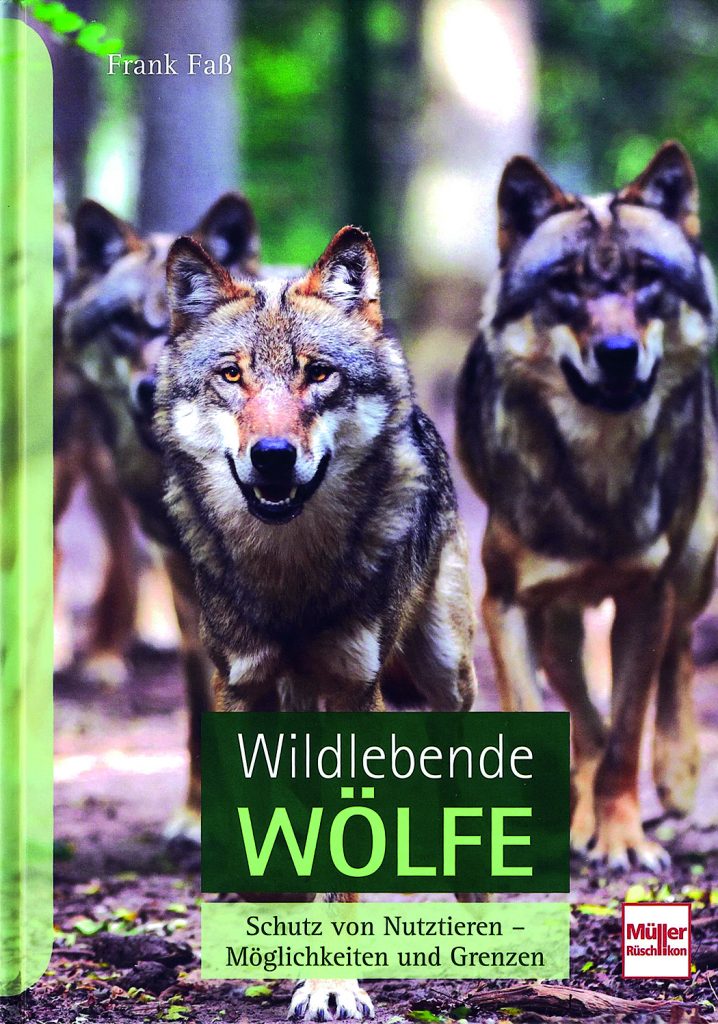
Full of gratitude, with the publisher Müller-Rüschlikon at the side of the WOLFCENTER, Frank Fass and his team of eleven authors were able to publish the textbook “Wild Wolves – Protection of Livestock – Possibilities and Limits” in spring 2018.
This book is a real contribution to German wolf management, because it illuminates the conflict field “wolves and livestock” in depth and shows solutions.
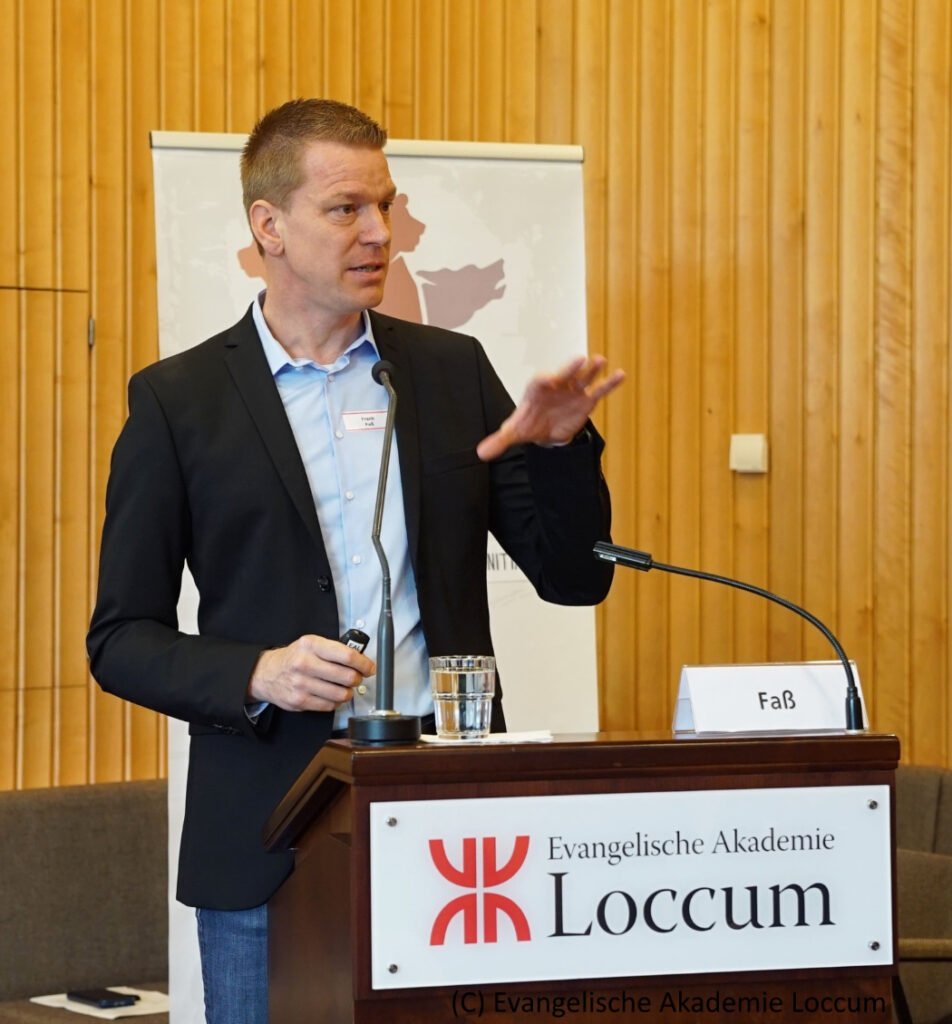
Expansion! In autumn 2019, the animal population was increased, in which the partner of the WOLFCENTER “Lorenzo’s Alpaca Farm” founded an alpaca farm on the area of the former sheep enclosure. This makes alpaca hikes and visits possible. The alpacas always captivate many visitors.
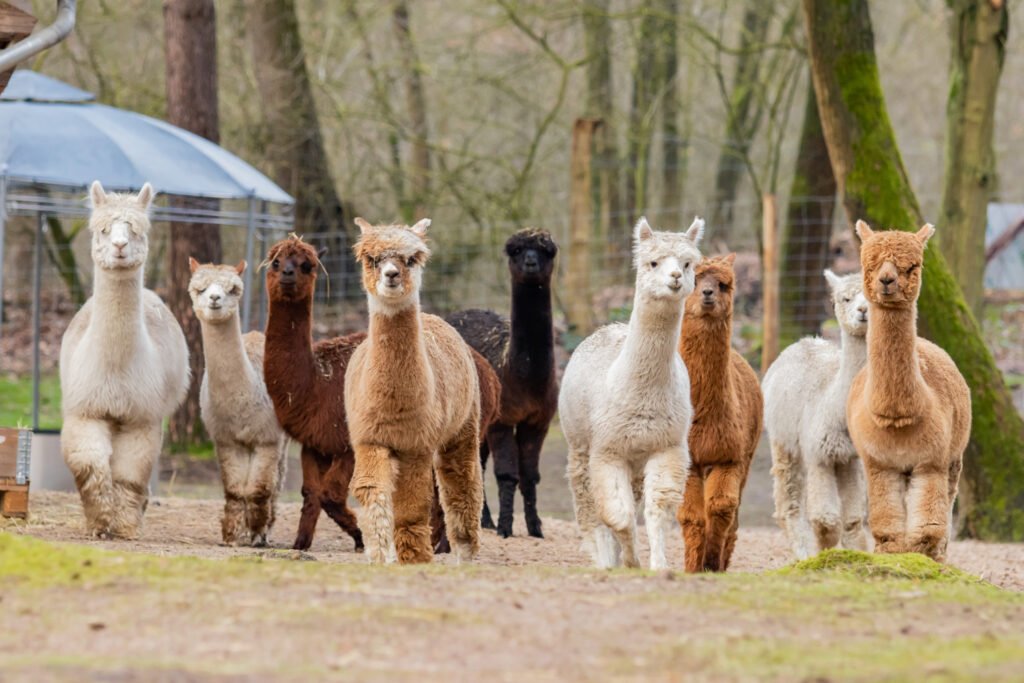
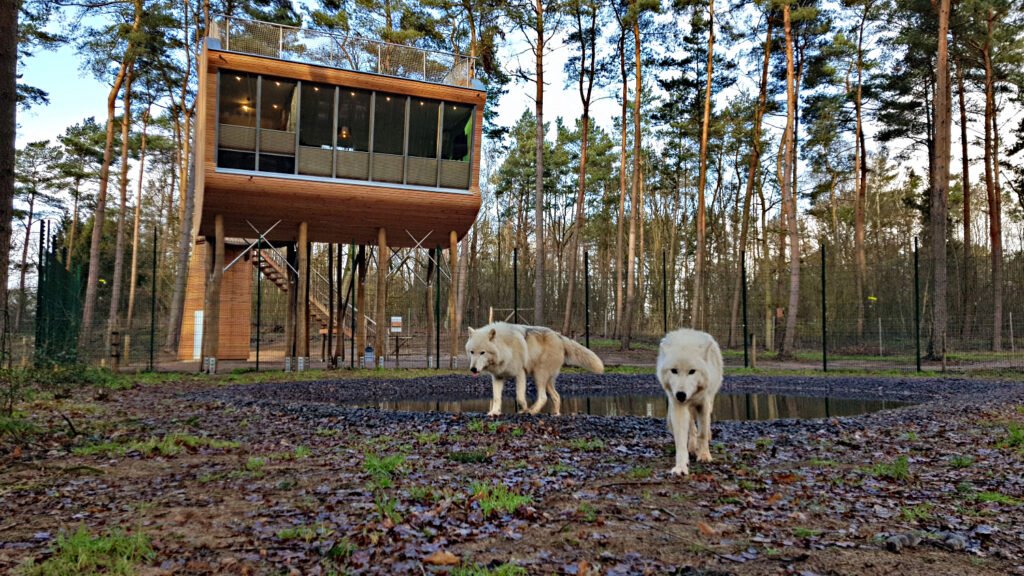
The overnight stays in the WOLFCENTER in the six teepees with its 24 sleeping places between the wolf enclosures represent an experience of a special kind. The tipi square offers the cozy setting for campfires under a starry sky accompanied by the grilling of delicacies. The fresh air creates the framework for deep sleep – even if the wolves may howl at night. If the weather is not so rosy, the large barbecue pavilion (built in 2022) with its approximately 25 beds and the large fire bowl in the middle serves as a cozy accommodation. Here it can be really sociable.
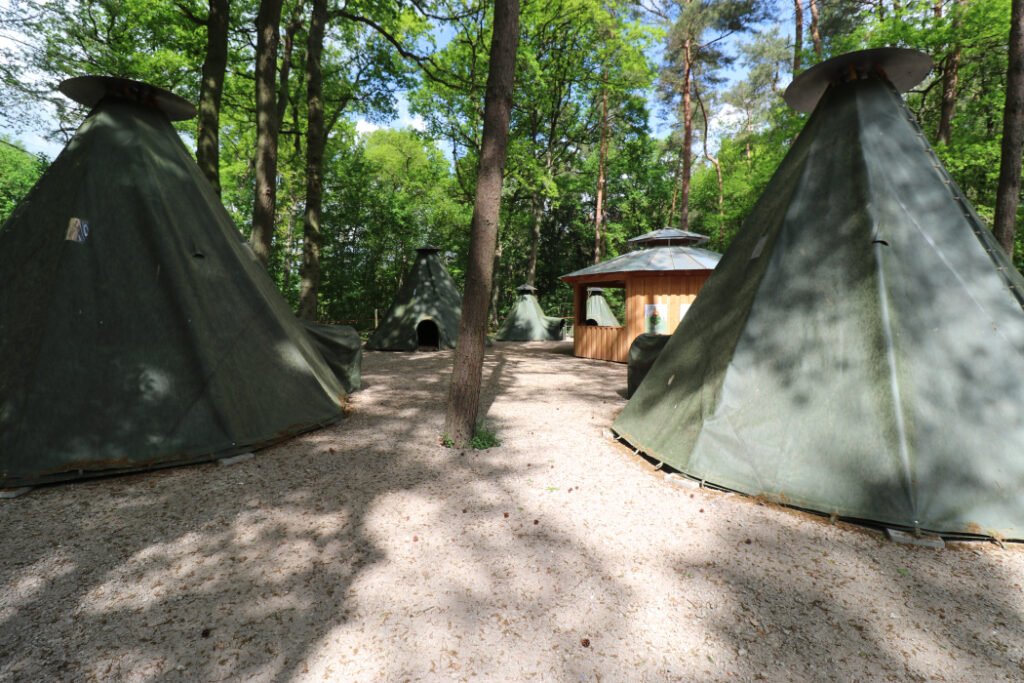
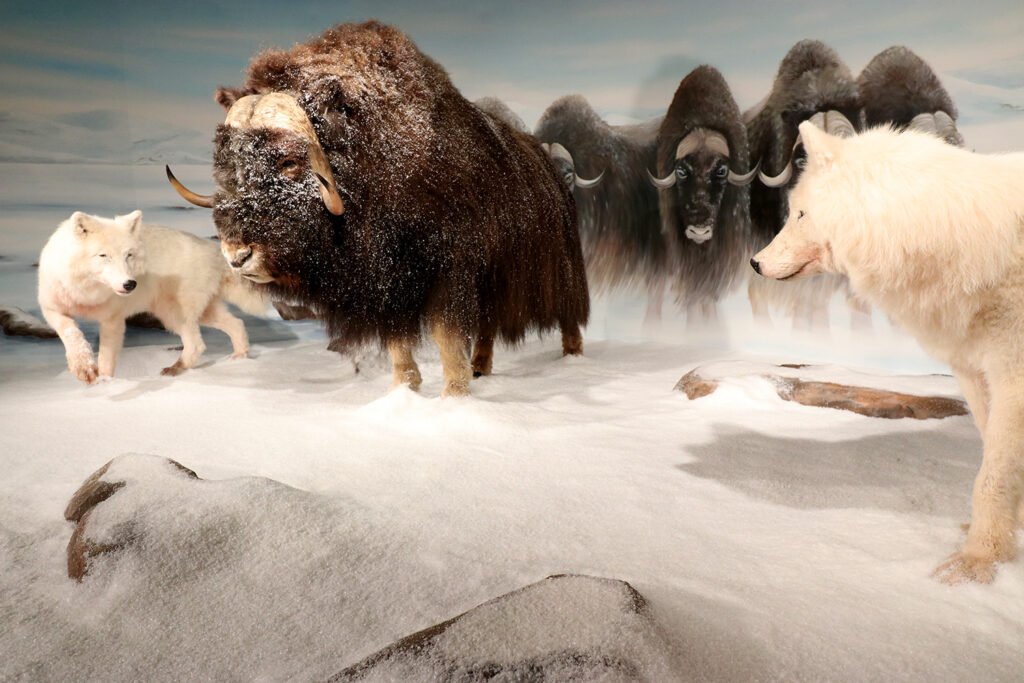
The latest highlight in the further development of the WOLFCENTER is the large Arctic diorama, which shows two arctic wolves attacking a musk ox. Acoustically accompanied by snowstorm noises, the impression is created to actually be in the Arctic!
Frank and Christina Faß have jointly managed the company WOLFCENTER as owners since its opening in 2010.
Born in Lower Saxony in 1974, Frank Fass grew up in a hunting family that laid the foundation for his closeness to nature. He can’t hide his passion for hunting dogs – so it was his experiences with dogs that sparked his interest in wolves. As a trained engineer for aerospace technology, he and Christina Faß developed the WOLFCENTER based on the North American model within five years. It is important to them to inform visitors to the WOLFCENTER intensively about wolves and their influence in Germany.
Christina Fass manages the company and is the foundation of this company. She is responsible for personnel, finances, events, appointments and the restaurant. Born in Lower Saxony in 1971, his interest in planning, organization and administration became a vocation in the form of training as an industrial clerk. After 21 years in the steel industry, she moved to this new division. Christina Faß is trained as a “coach” and is responsible for communication in the team and for customer management. It stands for the leisure activities of every age group with an educational character in the WOLFCENTER.
In 2016, Frank and Christina Faß opened a rescue station for injured and helpless wild wolves in the WOLFCENTER, which is available to the federal states.
In the years 2015 to 2018, Frank Faß served as chairman of the Wolf Working Group in the Lower Saxony Ministry of the Environment for the further development of wolf management. As an expert on herd protection measures with regard to farm animals that can be attacked by wolves, he and the WOLFCENTER team published an extensive reference book entitled “Wild Wolves – Protection of Livestock – Possibilities and Limits” in 2018 at Verlag Müller Rüschlikon.
Frank and Christina Faß are firmly convinced that living together with wolves in Germany is possible, although conflicts also need to be resolved. In his opinion, this can only succeed if all those involved take a “middle way” – i.e. away from extreme attitudes for or against wolves.
